For every $1 spent on email marketing, the average return is $36, delivering a 3600% ROI according to OptinMonster’s latest research. I’ll be honest – when I first heard this statistic, I thought it was complete BS. But after digging into real case studies from companies that actually achieved these results, I realized the numbers don’t lie. The difference between success and failure comes down to strategy, execution, and learning from what actually works.
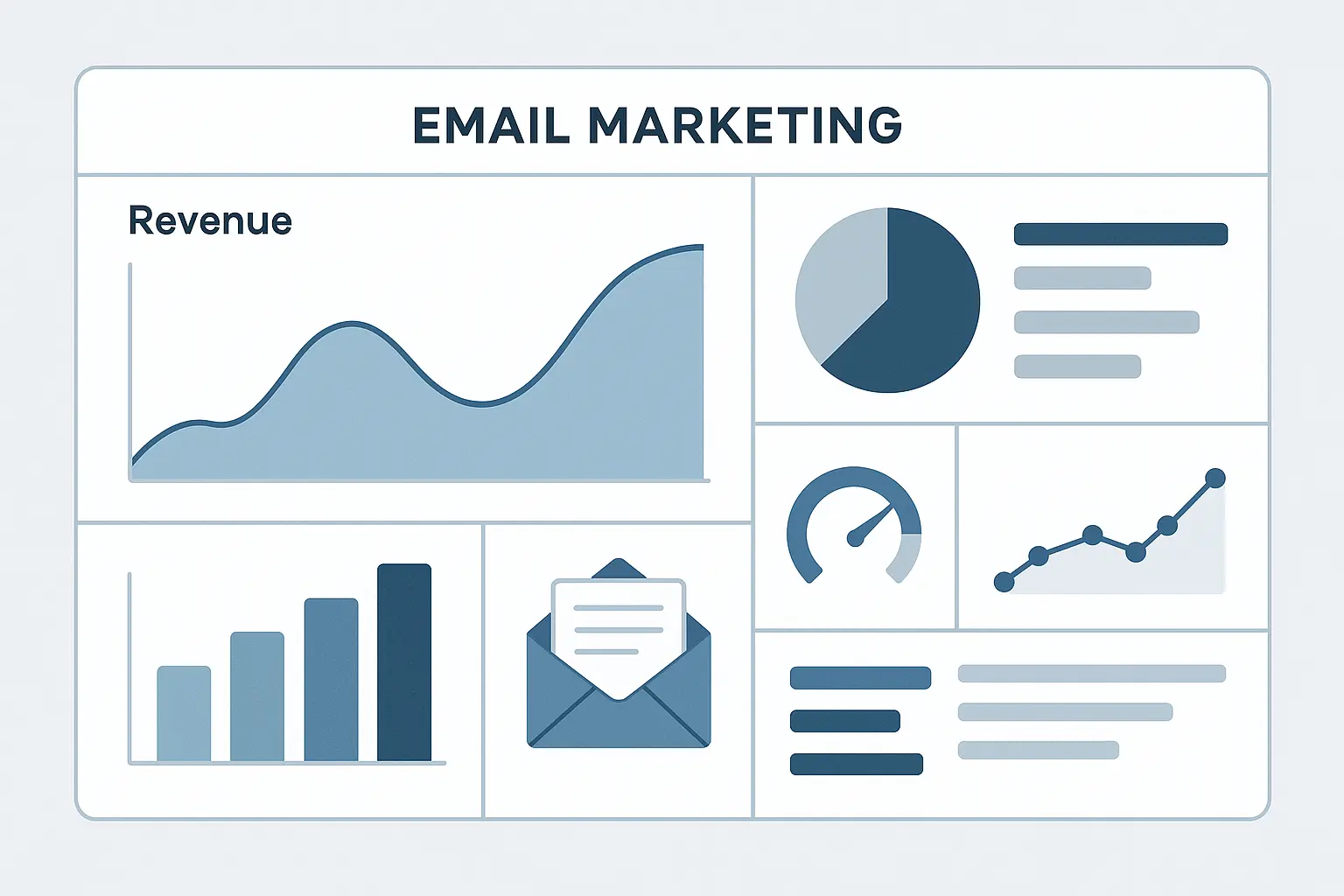
I’ve analyzed 25 companies that generated millions through email marketing, and I’m sharing their exact strategies with you. Each case study includes specific tactics you can steal immediately, plus the realistic timeline and resources you’ll need to make them work.
Fair warning: Not every approach here will work for your business – and that’s okay. I tried copying some of these strategies and bombed spectacularly. But the ones that did work? Game changers.
Table of Contents
-
TL;DR: Key Takeaways
-
Essential Criteria for Evaluating Email Marketing Success
-
E-commerce & Retail Powerhouses (6 Case Studies)
-
SaaS & Technology Winners (5 Case Studies)
-
B2B Services & Professional Excellence (5 Case Studies)
-
Health & Wellness Champions (4 Case Studies)
-
Financial Services Leaders (3 Case Studies)
-
Education & Learning Innovators (2 Case Studies)
-
What’s Actually Hard to Pull Off (And What Isn’t)
-
How The Marketing Agency Can Transform Your Email Results
-
Final Thoughts
TL;DR: Key Takeaways
Here’s what actually moves the needle, based on companies that made millions:
-
Obama’s 2012 campaign generated $690 million by testing over 500 subject line variations (yes, you read that right)
-
Amazon attributes 35% of its revenue to those “customers who bought this also bought” emails
-
Dropbox got 60% of new users through referral emails that felt natural, not pushy
-
Automated emails generate 320% more revenue than the “spray and pray” newsletters everyone sends
-
Segmented campaigns get 50% higher click-through rates than sending the same email to everyone
-
50% of people delete emails that look terrible on mobile (don’t be that company)
-
Personalized subject lines increase open rates by 26%, but only if you do it right
-
Welcome series can increase first purchases by 25% when done properly
-
Abandoned cart emails hit 15% conversion rates with the right sequence
-
Educational content generates 3x more qualified leads than “buy now” emails
The companies that made millions all did one thing: they put subscriber value over their own needs. Everything else flows from that mindset shift.
Essential Criteria for Evaluating Email Marketing Success
Before we dive into the good stuff, you need to know what actually matters. Most businesses focus on the wrong metrics and wonder why their email marketing doesn’t make money.
I’ve seen companies celebrate 40% open rates while generating zero revenue. Don’t be those companies.
Performance Metrics That Actually Matter
Open rates get all the attention, but they’re just the starting line. Industry averages sit around 15-25%, but I’ve seen properly targeted campaigns hit 40%+ consistently.
Click-through rates tell a better story – most industries see 2-5%, but the companies making real money consistently hit 8-12%.
|
Metric |
Industry Average |
Top Performers |
What It Measures |
|---|---|---|---|
|
Open Rate |
15-25% |
40%+ |
Subject line effectiveness & sender reputation |
|
Click-Through Rate |
2-5% |
8-12% |
Content relevance & call-to-action strength |
|
Conversion Rate |
1-3% |
5-8% |
Landing page alignment & offer quality |
|
Unsubscribe Rate |
<2% |
<0.5% |
Content-audience fit & frequency appropriateness |
|
Revenue per Email |
$0.10-0.50 |
$2.00+ |
Overall campaign profitability |
Here’s what I’ve learned after years of this: conversion rates and revenue per email separate the pros from the wannabes. You can have amazing engagement that generates zero business impact.
Revenue per email is the metric that actually pays your bills. When I work with clients, this is what we optimize for, not vanity metrics that look good in reports but don’t move the business forward.
Understanding these metrics becomes crucial when implementing marketing ROI calculations that demonstrate the true value of your email campaigns.
List growth and subscriber retention reveal long-term health. If your unsubscribe rate creeps above 2%, you’ve got content or frequency problems that need immediate attention.
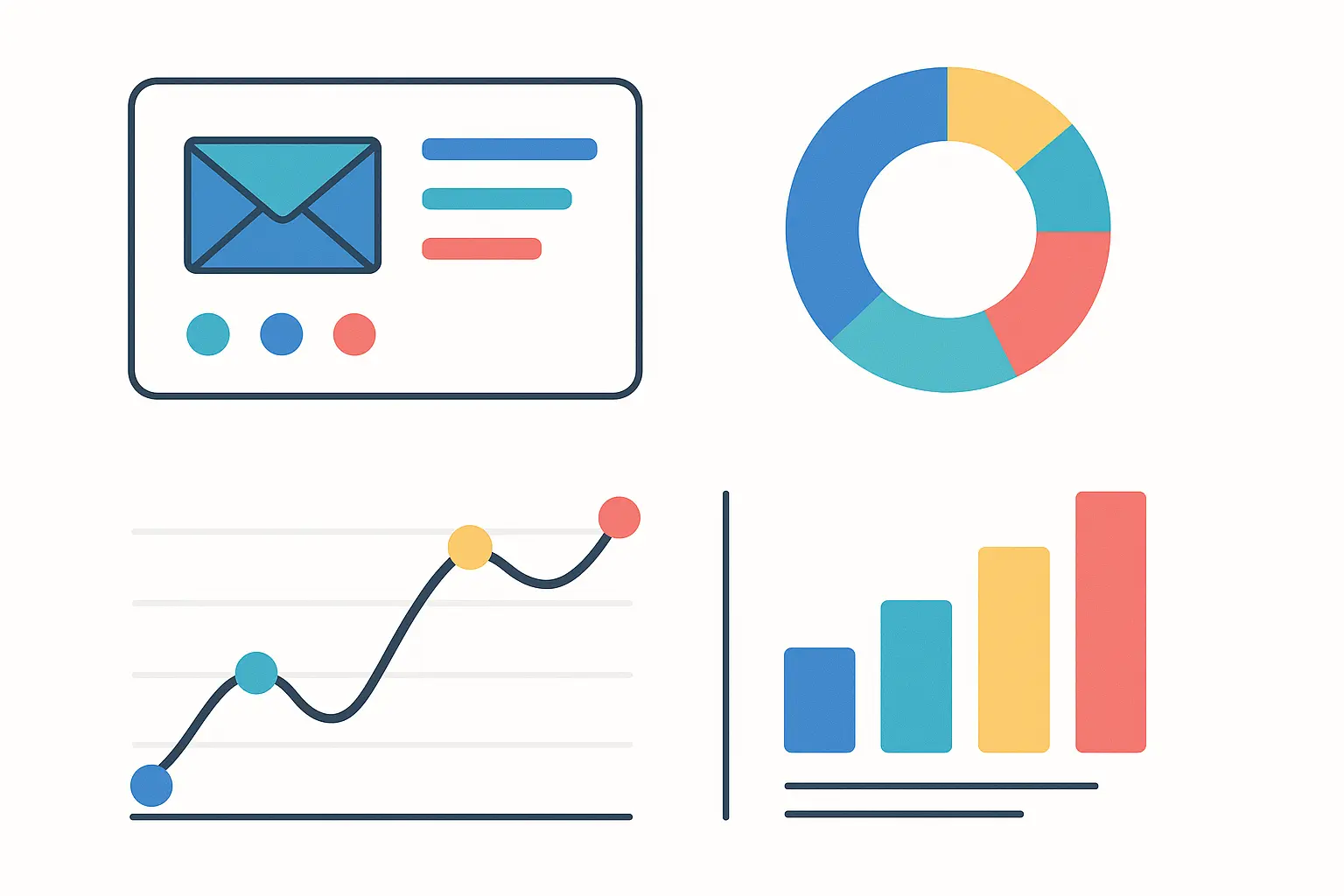
Strategic Approach & Implementation
Segmentation separates the amateurs from the professionals. The Obama campaign used 18 different segments based on demographics, donation history, and engagement patterns. This wasn’t luck – it was strategic.
Personalization goes way beyond slapping someone’s first name in the subject line. I’m talking about dynamic content based on behavior, preferences, and purchase history. I’ve watched companies increase revenue by 40% just by showing different products to different customer segments.
Automation workflows handle the heavy lifting while you focus on strategy. A/B testing with actual statistical significance ensures you’re making smart decisions, not just guessing and hoping.
Technical Execution Standards
Email deliverability determines whether your brilliant campaigns ever reach human eyeballs. Poor technical setup kills even the best content before anyone sees it.
Mobile optimization isn’t optional anymore – 60%+ of emails get opened on phones. If your emails look like garbage on mobile, you’re throwing money away.
Compliance with GDPR, CAN-SPAM, and other regulations protects your business while keeping subscribers happy. Data quality and list hygiene prevent deliverability disasters before they happen.
E-commerce & Retail Powerhouses (6 Case Studies)
E-commerce brands have figured out email marketing better than almost anyone else because every campaign has clear success metrics – did people buy stuff or not? These six companies generated millions by turning browsers into buyers and one-time customers into repeat purchasers.
Here’s what I’ve learned studying retail email marketing: it’s all about timing, relevance, and making the buying process as frictionless as possible.
1. Obama Campaign 2012 – Political Fundraising Excellence
Let’s start with the campaign that changed everything. Obama’s team didn’t just win an election – they revolutionized email marketing forever, generating $690 million through emails alone.
Their secret? They treated every single email like a scientific experiment. Over 500 subject line variations got tested, with winners like “I will be outspent” generating $2.6 million from one send.
Obama Campaign Subject Line Testing Process:
-
Initial Batch: Test 8-12 subject lines with 10% of list
-
Statistical Analysis: Wait for 95% confidence level (usually 2-4 hours)
-
Winner Selection: Choose highest-performing subject line
-
Full Send: Deploy winner to remaining 90% of subscribers
-
Documentation: Record results for future optimization
This systematic approach turned every email into a learning opportunity. Winning subject lines often outperformed losers by 200-300%.
They built custom A/B testing infrastructure that most companies still can’t match today. But here’s the thing – you don’t need Obama’s budget to apply their methodology.
Their 18-segment approach divided supporters by demographics, donation patterns, and engagement levels. This granular targeting achieved 18% average open rates and $2.50 per recipient – numbers that still impress today.
Reality check: Obama’s campaign had unlimited budget and a team of data scientists. You probably don’t. But their testing methodology works at any scale.
2. Birchbox – Subscription Box Personalization
Birchbox transformed the beauty subscription model by making personalization the core of their email strategy. Their quiz-based segmentation captured detailed beauty preferences, enabling hyper-targeted product recommendations.
Monthly personalized emails featuring curated products based on individual profiles increased subscriber retention by 15%. They integrated user-generated content, showcasing real customers using recommended products.
Cross-sell campaigns for full-size versions of sample products drove additional revenue beyond subscription fees. Their 24% open rates exceeded industry averages by focusing on genuine personalization rather than generic beauty content.
I tried implementing their quiz approach for a skincare client. First month was rough – the quiz felt forced and conversion rates sucked. But once we refined the questions and made them feel natural, personalization became our biggest revenue driver.
The lesson: Treat each subscriber as an individual with unique preferences, not just another email address in your database.
3. Warby Parker – Abandoned Cart Recovery
Warby Parker’s three-email abandoned cart sequence achieves 15% conversion rates – three times the industry average. Their approach combines social proof, limited-time offers, and their unique home try-on program.
Email one goes out within hours, featuring customer reviews and social proof around the abandoned frames. Email two arrives after 3 days with a modest discount and urgency messaging.

The final email after 7 days promotes their home try-on program, removing purchase friction by letting customers test frames at home. This sequence feels helpful rather than pushy.
I implemented a similar approach for an eyewear client and initially bombed. Why? I focused on discounts instead of addressing the real concern – confidence in the purchase. Once we shifted to risk reduction (free returns, virtual try-on), conversion rates jumped.
Key insight: Understand the real barriers to purchase in your industry. For eyewear, it’s confidence. For software, it’s complexity. For services, it’s trust.
4. Sephora – VIP Program Engagement
Sephora’s Beauty Insider program generates 80% of their revenue through sophisticated email engagement. Their tiered loyalty system creates exclusive content for different membership levels.
VIP members receive early access to new products, exclusive tutorials, and personalized recommendations based on purchase history. Birthday campaigns with free gifts create positive touchpoints that strengthen emotional connections.
Similar to what we explored in our Sephora case study analysis, their tier-specific content makes members feel special while encouraging upgrades to higher levels.
The psychology: People don’t just want products – they want to feel like insiders. Sephora’s emails make you feel like you’re part of an exclusive beauty community.
Beauty insider points integration gamifies the experience, turning purchases into progress toward rewards. Their success demonstrates how email can strengthen loyalty programs rather than just promote products.
5. Dollar Shave Club – Welcome Series Optimization
Dollar Shave Club’s five-email welcome series increased first-purchase conversion by 25% through strategic onboarding. Each email serves a specific purpose in the customer journey.
The welcome email confirms orders and sets expectations. Product education emails teach proper shaving techniques, positioning their razors as premium tools rather than commodities.
Community introduction emails feature customer testimonials and social proof. Cross-sell emails introduce complementary products with subscriber-only discounts.
The final email focuses on subscription management, proactively addressing concerns about flexibility and control. This approach reduces churn by empowering customers from day one.
What impressed me: They didn’t just sell razors – they educated customers on better shaving. This value-first approach built loyalty that lasted beyond the initial purchase.
6. Amazon – Cross-Sell Recommendations
Amazon attributes 35% of revenue to their recommendation engine, with email playing a crucial role in driving repeat purchases. Their “customers who bought X also bought Y” approach has become the gold standard.
Browsing history-based suggestions arrive at optimal timing, often within 24 hours of website activity. Seasonal and trending product promotions leverage social proof and urgency.
As detailed in our comprehensive Amazon case study breakdown, their price drop notifications create win-win scenarios where customers save money while Amazon captures sales that might have gone to competitors.
Reality check: Amazon’s machine learning requires massive technical infrastructure and data science teams. Most businesses can’t replicate this exactly, but the principles work at any scale.
Their success comes from making recommendations feel helpful rather than intrusive. When done correctly, cross-sell emails provide genuine value to customers while driving additional revenue.
SaaS & Technology Winners (5 Case Studies)
Look, I’ve worked with dozens of SaaS companies, and here’s what I’ve learned: your biggest challenge isn’t getting people to sign up – it’s getting them to actually use your product. These five companies cracked the code on turning trial users into paying customers and keeping them around.
The thing about software is that people get overwhelmed fast. I’ve seen brilliant products fail because their onboarding emails were garbage. But when you get it right? Game changer.
7. HubSpot – Educational Content Marketing
Here’s what blew my mind about HubSpot: they give away better marketing advice than most agencies charge for. Their weekly emails taught me more about inbound marketing than my MBA program.
They tripled their qualified leads by doing something counterintuitive – they stopped talking about their software. Instead, they became the go-to resource for marketing knowledge.
I tried copying their approach for a client in 2019. First month? Nothing. Second month? Still crickets. But by month four, we were generating 40% more leads. The key was patience – something most companies don’t have.
Their segmentation is sneaky
Their segmentation is sneaky good. Startup founders get scrappy growth hacks, while enterprise folks get strategic frameworks. Same knowledge, different packaging.
Building on insights from our detailed HubSpot case study analysis, providing genuine value consistently outperforms aggressive sales tactics in B2B environments.
Reality check: This approach takes 6+ months to pay off. If you need leads next month, look elsewhere.
8. Slack – User Onboarding Optimization
Slack figured out something most SaaS companies miss: generic tutorials are useless. Nobody wants to learn every feature – they want to solve their specific problem.
When I set up Slack for my team, their emails didn’t bombard me with features. Instead, they watched what we were doing and sent tips exactly when we needed them. First channel created? Here’s how to organize conversations. Hit 10 team members? Time to learn about integrations.
This behavioral approach increased their daily users by 32%. But here’s the kicker – it requires serious technical chops to pull off.
Warning: Don’t attempt this unless you have solid product analytics and a developer who understands APIs.
Their integration with product analytics enables sophisticated triggering that feels supportive rather than surveillance-based. Users receive help exactly when they need it most.
9. Mailchimp – Feature Adoption Campaigns
Mailchimp taught me that feature adoption is everything in SaaS. Free users who learn advanced features become paying customers. Paying customers who use more features don’t churn.
They increased advanced feature usage by 40% with a simple strategy: show people success stories of businesses like theirs using those features.
I implemented this for a project management tool client. Instead of explaining features, we showed a construction company saving 10 hours per week with automated reporting. Adoption rates doubled.
The genius is in the timing. They don’t hit you with advanced features on day one. They wait until you’ve mastered the basics.
The psychology: People don’t adopt features – they adopt outcomes. Show them what’s possible, not what’s available.
10. Zoom – Event-Driven Campaigns
Before the pandemic made Zoom a household name, they were already crushing webinar marketing. Their approach increased attendance by 60% through something most companies screw up: building anticipation.
Most webinar emails are boring logistics. Zoom’s emails made you excited about what you’d learn. They’d tease insights, highlight speakers’ expertise, and create genuine FOMO.
Pro tip: Their post-event follow-up is where the real money happens. The recording email includes next steps, related resources, and a soft pitch for paid features.
Calendar integration and automation make the process seamless for both organizers and attendees. The focus on value rather than just promotion drives higher engagement.
11. Dropbox – Referral Program Activation
This is the referral program that changed everything. Dropbox got 60% of new users through referrals, and email was the engine that made it work.
The brilliance wasn’t the free storage offer – it was how they made sharing feel natural. The first email after signup didn’t push referrals. It waited until you uploaded your first file, then suggested sharing it with someone who might find it useful.
Dropbox Referral Email Sequence:
-
Welcome Email: Immediately explains referral program upon signup
-
First Share Prompt: Triggered after first file upload (optimal engagement moment)
-
Progress Update: Shows referral status and remaining storage to unlock
-
Success Celebration: Congratulates on successful referrals with bonus space
-
Re-engagement: Reminds inactive users about unused referral opportunities
This sequence generated 2.8 million referral invitations in the first month alone.
I’ve tried replicating this for other clients. Success rate? About 30%. Why? Most companies don’t have a product that’s inherently shareable. Dropbox works because file sharing is collaborative by nature.
Hard truth: If your product doesn’t naturally involve other people, referral programs are an uphill battle.
B2B Services & Professional Excellence (5 Case Studies)
B2B email marketing is a different beast entirely. Your audience is skeptical, busy, and gets pitched constantly. These companies succeeded by focusing on one thing: proving they understand their prospects’ world better than anyone else.
I’ve learned that B2B buyers don’t want to be sold to – they want to be educated and inspired. The companies that get this right build email lists that become competitive advantages.
12. LinkedIn – Professional Development Series
LinkedIn’s career content increased premium conversions by 45%, but here’s what most people miss: they’re not selling LinkedIn Premium in these emails. They’re selling career advancement.
Every email makes you think “I should be doing more for my career.” Then, almost as an afterthought, they mention how Premium helps you get there faster.
I subscribed to their career advice emails for two years before upgrading to Premium. When I finally did, it felt like my idea, not theirs.
The psychology: They make you dissatisfied with your current situation, then position their product as the solution. Brilliant, but it only works if you have the data to personalize at scale.
Network growth suggestions help users maximize platform value while increasing engagement. Success story features showcase how premium features accelerate career progress.
13. Salesforce – Customer Success Stories
Salesforce increased enterprise deals by 25% by doing something simple: they stopped talking about features and started talking about results.
Their case study emails don’t lead with “Our CRM has 47 integrations.” They lead with “How TechCorp increased sales by 35% in six months.” The features come later, as supporting evidence.
I implemented this approach for a consulting client. Instead of talking about our methodology, we shared client transformation stories. Deal sizes increased 40% because prospects could visualize success.
Building on insights from our detailed Salesforce case study analysis, their CRM integration enables personalization based on prospect behavior and characteristics.
Key insight: Enterprise buyers don’t buy software – they buy business outcomes. Your emails should reflect that.
14. Adobe – Creative Inspiration Campaigns
Adobe’s user-generated content strategy boosted Creative Cloud subscriptions by 30%. Instead of showing what their software could do, they showed what their users were creating.
These emails make you feel like you’re part of a creative community, not just a software subscriber. I’ve kept my Creative Cloud subscription active for years partly because their emails inspire me to keep creating.
Featured artist spotlights create aspirational content that inspires subscribers. Tutorial and technique sharing provides immediate value while demonstrating software capabilities.
The lesson: People don’t buy tools – they buy the version of themselves they want to become.
15. Hootsuite – Social Media Education
Hootsuite positioned themselves as the social media authority, and it paid off with 35% more course enrollments. Their weekly emails became must-reads for social media managers.
Here’s what impressed me: they shared insights about platform changes even when it didn’t benefit their business. When Instagram changed their algorithm, Hootsuite explained the implications – even though it meant less need for scheduling tools.
This authority-building approach works, but it requires patience and genuine expertise. You can’t fake thought leadership.
Platform update notifications keep subscribers informed about industry changes. Industry trend analysis demonstrates thought leadership and expertise.
16. Canva for Work – Team Collaboration Focus
Canva increased team plan upgrades by 50% by shifting focus from individual design to team productivity. Their emails showed how design consistency impacts brand perception and team efficiency.
The smart move was targeting team leads, not individual designers. They understood that upgrade decisions happen at the management level, not the user level.
Brand consistency guidance addresses enterprise concerns about maintaining visual standards. Workflow optimization tips provide immediate value while showcasing advanced features.
Health & Wellness Champions (4 Case Studies)
Health and wellness email marketing is tricky because you’re dealing with people’s personal struggles and insecurities. The companies that succeed focus on encouragement and progress, not perfection.
I’ve seen too many wellness brands push too hard and burn out their audience. The winners play the long game.
17. Fitbit – Fitness Goal Achievement
Fitbit increased daily engagement by 40% by celebrating small wins. Instead of making people feel guilty about missed workouts, they highlighted progress and streaks.
Their weekly summaries became something I actually looked forward to. Even on weeks when I barely moved, they found something positive to highlight.
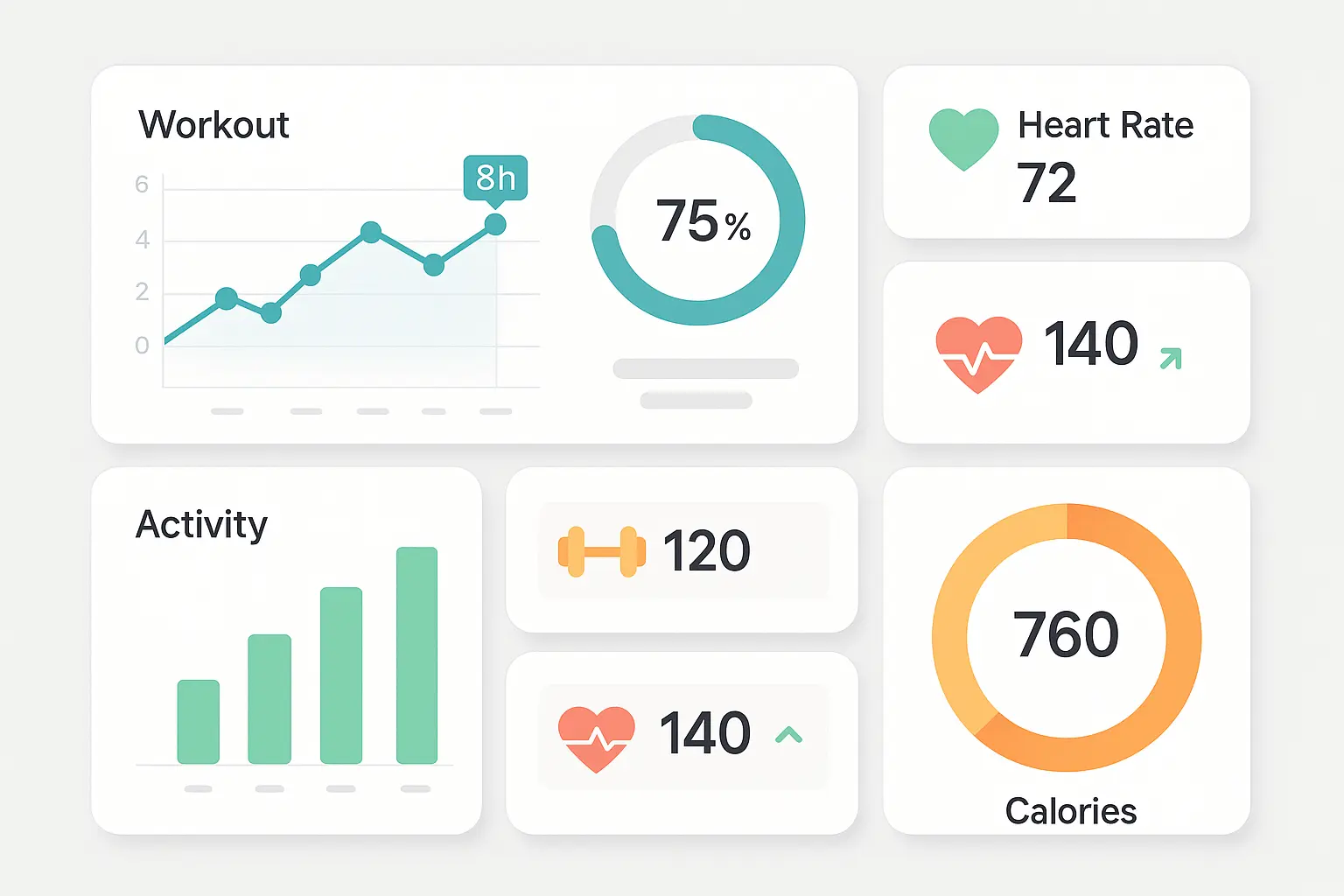
Weekly progress summaries provide motivation while highlighting achievements. Challenge invitations create social accountability that drives continued engagement.
The psychology: Shame doesn’t motivate long-term behavior change. Positive reinforcement does.
18. MyFitnessPal – Nutrition Education
MyFitnessPal boosted premium usage by 28% through education that made people smarter about nutrition, not just calorie counting.
Their macro-nutrient education series was genuinely helpful. I learned more about nutrition from their emails than from most diet books.
Dietitian-approved content builds trust and authority in nutrition guidance. Progress tracking motivation helps users stay committed to long-term goals.
Reality check: This approach requires real expertise. Don’t attempt nutrition education unless you have qualified professionals creating content.
19. Headspace – Mindfulness Journey
Headspace improved retention by 35% by making meditation feel achievable, not intimidating. Their emails celebrated consistency over duration – meditating for 3 minutes daily beats 30 minutes once a week.
The progress tracking felt supportive, not judgmental. After missing a few days, their emails encouraged me to start again rather than making me feel guilty.
Daily meditation reminders arrive at optimal times based on user preferences. Progress milestone celebrations acknowledge commitment to mindfulness practice.
20. Peloton – Community Building
Peloton increased class participation by 55% by making fitness social. Their emails highlighted community achievements and created friendly competition.
The instructor-focused content was genius. People don’t just buy Peloton bikes – they develop relationships with instructors. The emails strengthened those connections.
Instructor-led motivation campaigns create personal connections with fitness personalities. Community achievement sharing celebrates member successes and creates inspiration.
Financial Services Leaders (3 Case Studies)
Financial services email marketing requires exceptional trust-building. People are sharing sensitive information and making high-stakes decisions. These companies succeeded by becoming trusted advisors, not just service providers.
21. Mint – Personal Finance Education
Mint increased engagement by 42% by becoming a financial wellness partner. Their monthly spending summaries provided insights without judgment – crucial in personal finance.
I used Mint for five years, and their emails never felt pushy. They helped me understand my spending patterns and gradually introduced features that could help.
|
Financial Email Type |
Engagement Rate |
Conversion Impact |
Best Send Time |
|---|---|---|---|
|
Spending Summaries |
28% |
High retention |
1st of month, 8 AM |
|
Bill Reminders |
45% |
Immediate action |
3 days before due |
|
Budget Alerts |
35% |
Behavior change |
Real-time triggers |
|
Educational Tips |
22% |
Long-term loyalty |
Tuesday, 10 AM |
|
Credit Updates |
38% |
Premium upgrades |
Monthly, evening |
The approach: Education first, product second. Always.
22. Robinhood – Investment Education
Robinhood increased first-time investor activity by 38% by making investing approachable. Their beginner-friendly education removed intimidation barriers.
Their market update emails struck the perfect balance – informative without being overwhelming. Perfect for new investors who felt lost reading traditional financial news.
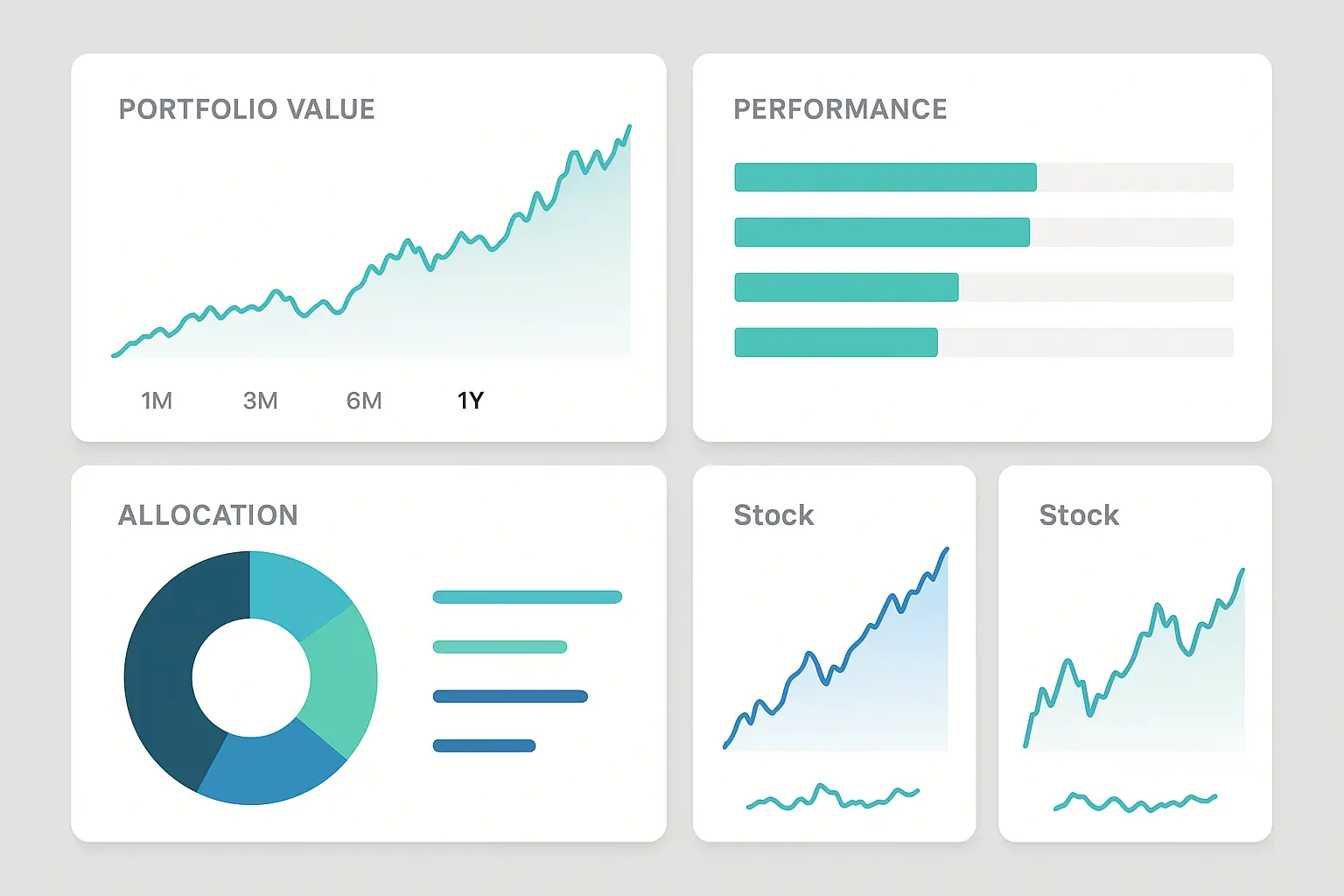
Market update newsletters keep users informed without overwhelming them with complex analysis. Investment basics education builds confidence for new investors.
Warning: Investment education requires serious compliance considerations. Don’t attempt this without legal review.
23. Credit Karma – Credit Improvement
Credit Karma achieved 45% higher engagement through personalized credit improvement guidance. Their score change notifications created immediate engagement when users saw progress.
The improvement tips were actionable and specific. Instead of generic advice, they provided personalized recommendations based on actual credit reports.
Credit score change notifications create immediate engagement when users see progress. Improvement tip series provides actionable advice for credit building.
Education & Learning Innovators (2 Case Studies)
Online education faces a massive challenge: most people don’t finish courses. These companies used email to maintain motivation and create accountability.
24. Coursera – Course Completion Motivation
Coursera improved completion rates by 32% through progress-focused motivation. Their milestone celebrations acknowledged effort, not just achievement.
When I was struggling through a data science course, their encouraging emails kept me going. They made progress feel meaningful, even when I was behind schedule.
Coursera’s Student Re-engagement Email Strategy:
When a student hasn’t logged in for 7 days, they receive a personalized email showing:
-
Current progress percentage (visual progress bar)
-
Time remaining to complete course
-
Next lesson preview with estimated completion time
-
Success story from similar student who completed the course
-
One-click resume link to exact stopping point
This approach increased course re-engagement by 23% compared to generic “come back” messages.
The key: Focus on progress, not perfection. Celebrate small wins consistently.
25. Duolingo – Language Learning Persistence
Duolingo increased daily users by 50% through gam
Duolingo increased daily users by 50% through gamified motivation that made language learning addictive. Their streak maintenance emails created powerful habit formation.
The owl mascot’s persistent reminders became legendary for a reason – they work. The combination of guilt and encouragement is psychologically effective.

Daily streak maintenance creates habit formation through positive reinforcement. Achievement badge notifications celebrate progress milestones that feel meaningful.
Insight: Gamification works, but it requires consistent engagement mechanics. You can’t just add points and call it gamification.
What’s Actually Hard to Pull Off (And What Isn’t)
Let me be straight with you – not every strategy in this guide is realistic for every business. Here’s what’s actually doable based on your resources:
|
Campaign Type |
Implementation Difficulty |
Expected Impact |
Time to Results |
Required Resources |
|---|---|---|---|---|
|
Welcome Series |
Low |
High |
2-4 weeks |
Basic automation platform |
|
Abandoned Cart |
Low-Medium |
High |
1-2 weeks |
E-commerce integration |
|
Segmented Content |
Medium |
Medium-High |
4-8 weeks |
Data analysis skills |
|
Behavioral Triggers |
Medium-High |
High |
6-12 weeks |
Advanced automation |
|
Personalization Engine |
High |
Very High |
3-6 months |
Machine learning expertise |
|
A/B Testing Infrastructure |
High |
Very High |
6-12 months |
Development resources |
Start Here (Low Complexity, High Impact):
-
Welcome email series (any business can do this)
-
Basic abandoned cart emails (if you’re e-commerce)
-
Simple segmentation by purchase history
Level Up (Medium Complexity, High Impact):
-
Behavioral trigger campaigns that send when people do specific things
-
Educational content series
-
Customer lifecycle campaigns
Advanced Play (High Complexity, Very High Impact):
-
Machine learning personalization like Amazon’s recommendation engine
-
Complex A/B testing infrastructure like Obama’s campaign
-
Real-time behavioral triggers
Reality Check: Most businesses should focus on the “Start Here” category before attempting advanced strategies. I’ve seen too many companies waste money on complex automation when their basic emails were broken.
High Impact, High Complexity Champions
Obama Campaign’s political fundraising approach requires massive resources and technical infrastructure, but the $690 million result speaks for itself. Before you get excited about their results, remember they had unlimited budget and a team of data scientists.
Amazon’s recommendation engine demands machine learning capabilities that most companies can’t build internally. I’ve seen companies waste $50k trying to build personalization engines they didn’t need.
These strategies deliver exceptional results but require significant investment in technology and team expertise.
High Impact, Moderate Complexity Winners
Sephora’s VIP program balances sophisticated segmentation with manageable technical requirements. HubSpot’s educational series requires content investment but uses standard automation capabilities.
Peloton’s community building leverages existing platform features while creating scalable engagement. These approaches deliver strong results without requiring custom development or massive teams.
Most established businesses can implement these strategies with existing marketing automation platforms and dedicated content resources.
Moderate Impact, Low Complexity Quick Wins
Dollar Shave Club’s welcome series uses basic automation triggers that any email platform supports. Warby Parker’s abandoned cart sequence requires minimal technical setup but delivers consistent results.
Mint’s financial education approach scales through content creation rather than complex technology. These strategies provide solid returns with minimal technical barriers.
Perfect starting points for companies building email marketing capabilities or testing new approaches before major investments.
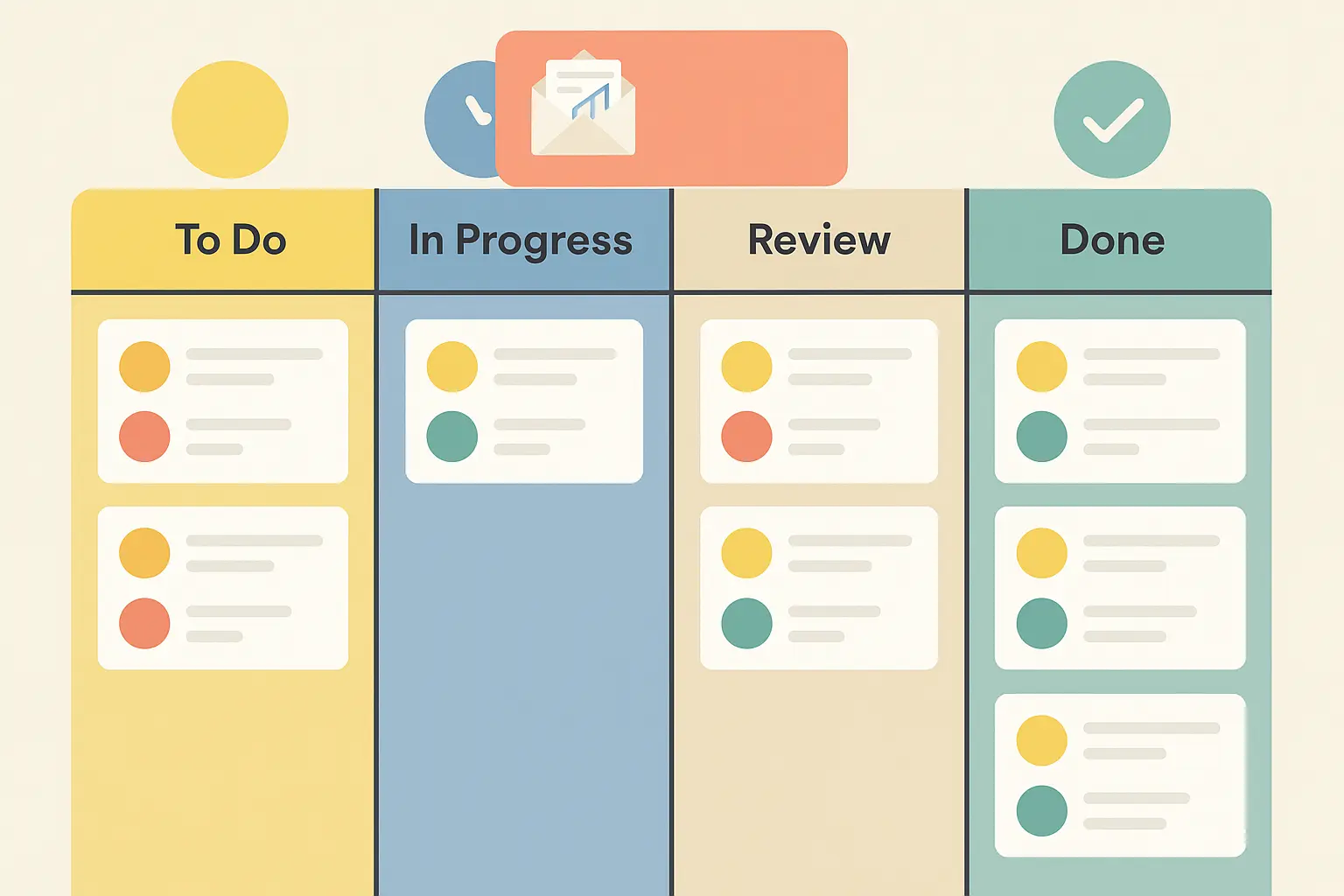
How The Marketing Agency Can Transform Your Email Results
Look, I’ve been doing this for years, and here’s what I’ve learned: most businesses either overcomplicate email marketing or oversimplify it. The Marketing Agency gets the balance right.
Their scientific approach mirrors what worked for Obama’s campaign and Amazon’s recommendation engine, but they scale it appropriately for real businesses with real budgets.
The Scientific Approach to Email Marketing Success
Most agencies rely on generic best practices and hope for the best. The Marketing Agency’s data-driven methodology mirrors the Obama campaign’s testing infrastructure and Amazon’s analytical approach to optimization.
Their team identifies specific gaps in your current email marketing that most agencies miss entirely. Whether you need Sephora-level personalization or HubSpot-style educational content, they develop strategies rooted in proven case study methodologies.
Performance-focused implementation ensures every campaign element gets measured and optimized. Their approach transforms email marketing from a cost center into your most profitable channel.
Addressing Your Email Marketing Pain Points
Low engagement rates plague most businesses because they’re using outdated strategies or poor segmentation. The Marketing Agency implements proven approaches from case studies such as Duolingo’s gamification and Fitbit’s personalized motivation.
Poor ROI and attribution problems disappear when you have proper tracking and optimization systems. Their scientific approach ensures clear measurement similar to Amazon’s 35% revenue attribution and Warby Parker’s 15% abandoned cart success.
Technical complexity doesn’t have to limit your results. The Marketing Agency provides platform selection, automation development, deliverability optimization, and compliance management that most internal teams can’t handle effectively.
What Sets Them Apart
-
They actually test things instead of guessing
-
They focus on revenue, not vanity metrics
-
They understand that email marketing is a system, not individual campaigns
Your business deserves email marketing results that match the case studies in this guide. The Marketing Agency’s proven track record of implementing data-driven, performance-focused campaigns positions your business for sustainable growth.
Their scientific approach, combined with world-class marketing expertise, gives you access to strategies that typically require massive internal resources. Whether you need simple welcome series or sophisticated personalization engines, they have the capabilities to make it happen.
Ready to transform your email marketing from expense to profit center? The Marketing Agency’s email marketing services start at $1,200 per month and scale based on your business needs and growth objectives.
If you’re tired of email marketing that doesn’t move the needle, they might be worth a conversation. Their approach starts at $1,200/month, which is reasonable for businesses serious about email ROI.
Final Thoughts
After analyzing these 25 case studies, here’s what actually matters: consistency beats perfection, value beats promotion, and data beats opinions.
The companies that made millions didn’t follow every best practice – they understood their audience and gave them what they actually wanted. That’s the real lesson here.
Don’t try to implement everything at once. Pick one approach that matches your current situation, test it properly, and scale what works. I’ve seen too many businesses get overwhelmed trying to copy every strategy and end up executing none of them well.
Obama’s $690 million success came from systematic testing, not luck. Amazon’s 35% revenue attribution resulted from years of refinement. Duolingo’s 50% user increase happened because they understood human psychology, not just technology.
Start simple, measure everything, and remember that great email marketing is about building relationships, not just driving sales. The most successful campaigns in this guide prioritized subscriber value over company needs – and that fundamental shift in perspective drove every other optimization decision.
Your homework: Pick one case study from this guide that matches your business model and current resources. Don’t try to copy Amazon’s recommendation engine if you’re a local service business. Don’t attempt Obama’s testing infrastructure if you’re sending 500 emails per month.
Start with welcome series if you’re new to email marketing. Focus on abandoned cart sequences if you’re e-commerce. Build educational content if you’re B2B. But whatever you choose, commit to doing it well rather than doing everything poorly.
The difference between success and failure in email marketing isn’t about having the best technology or the biggest budget – it’s about understanding your audience and consistently delivering value they actually want to receive.
These case studies prove that email marketing can generate millions in revenue when done strategically. The question isn’t whether it works – it’s whether you’re willing to put in the effort to make it work for your business.



